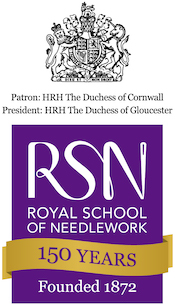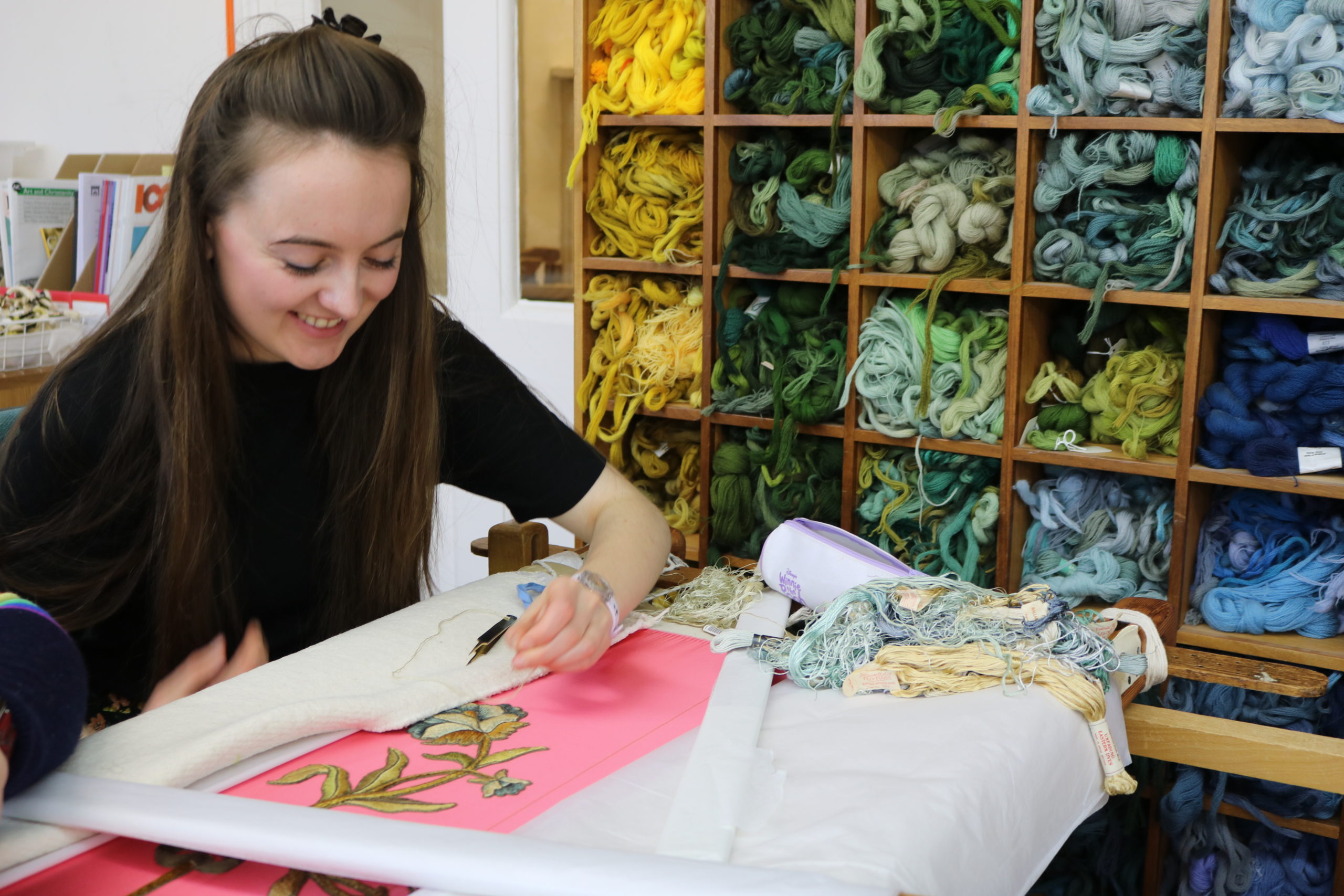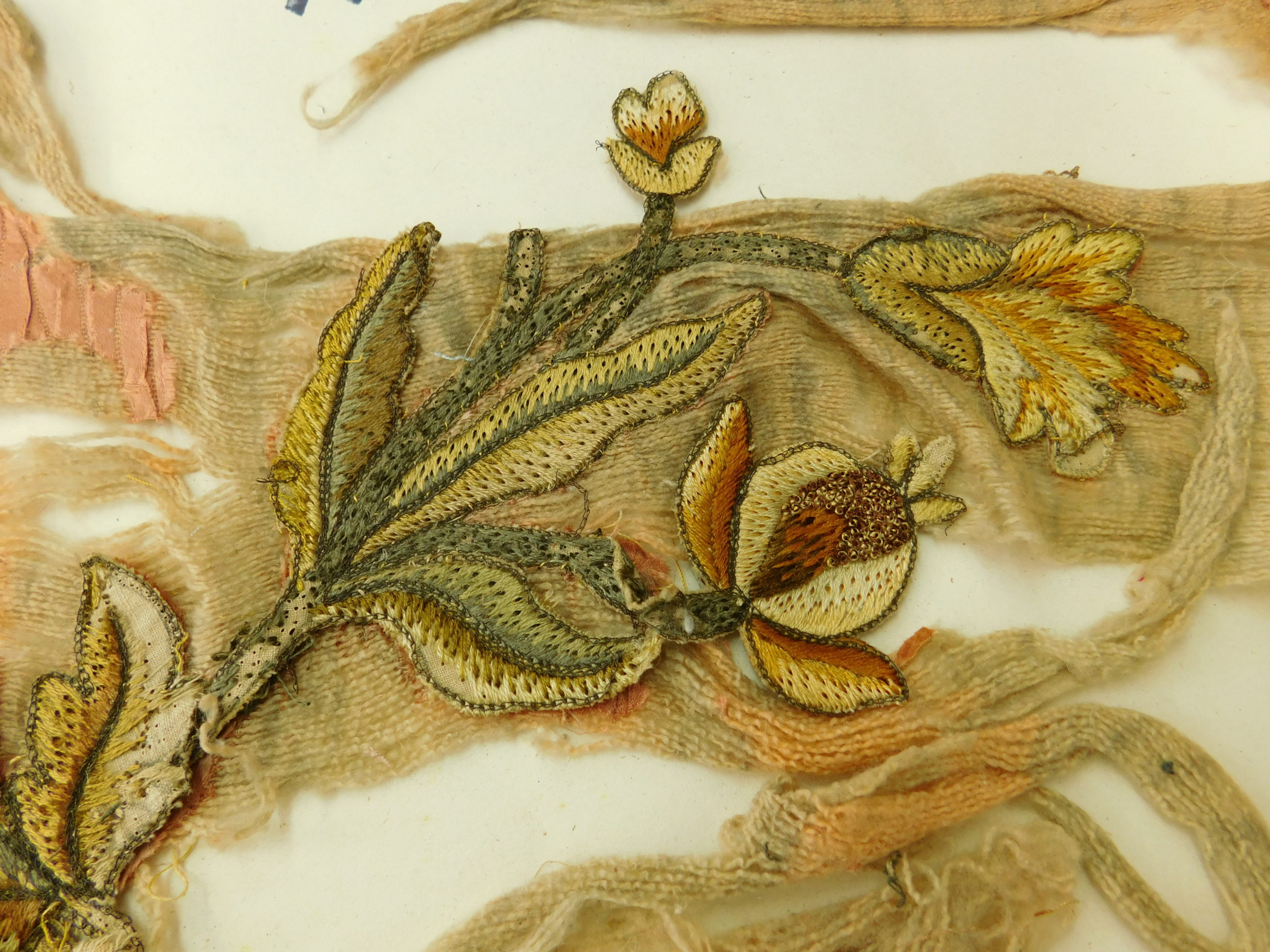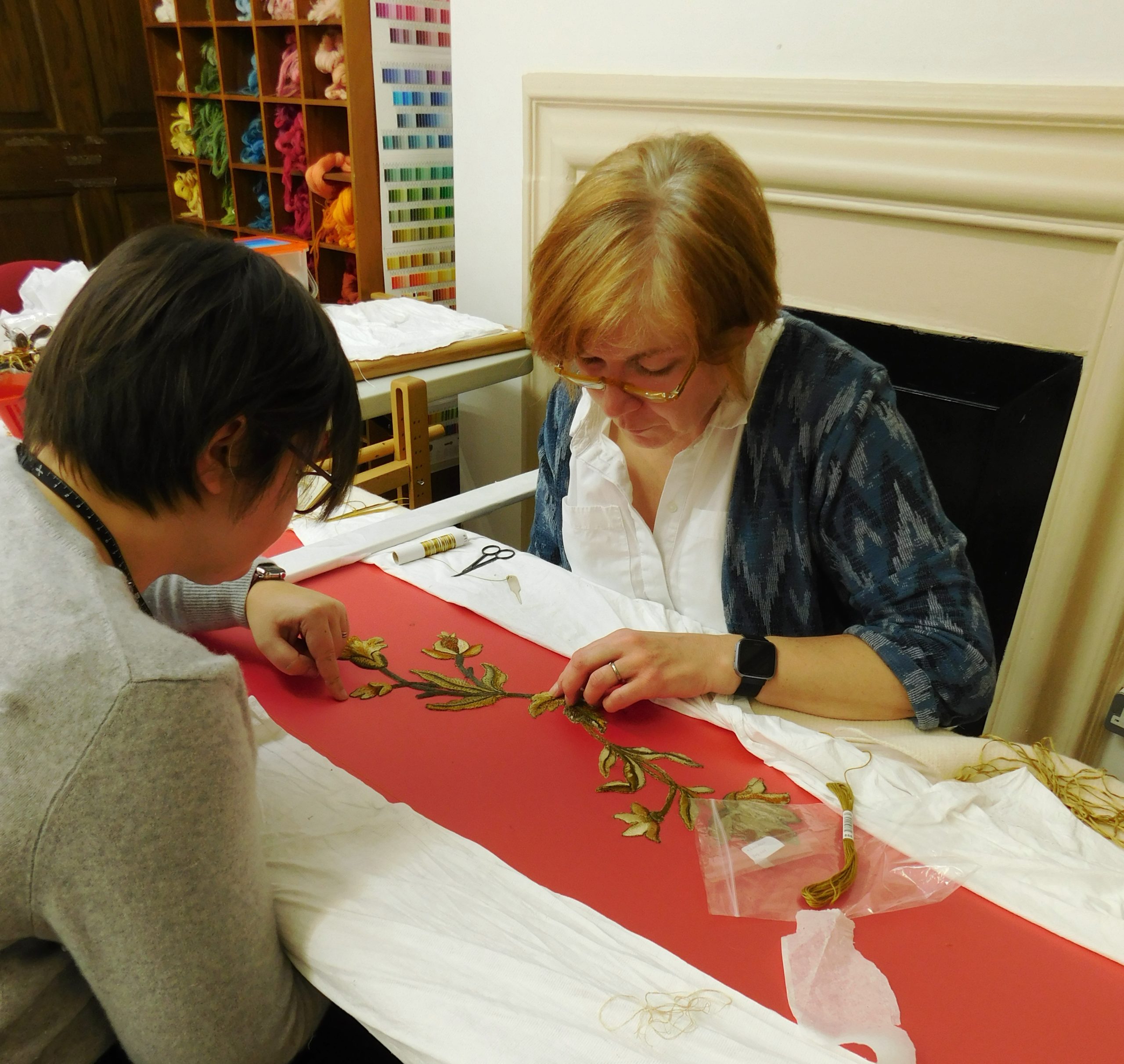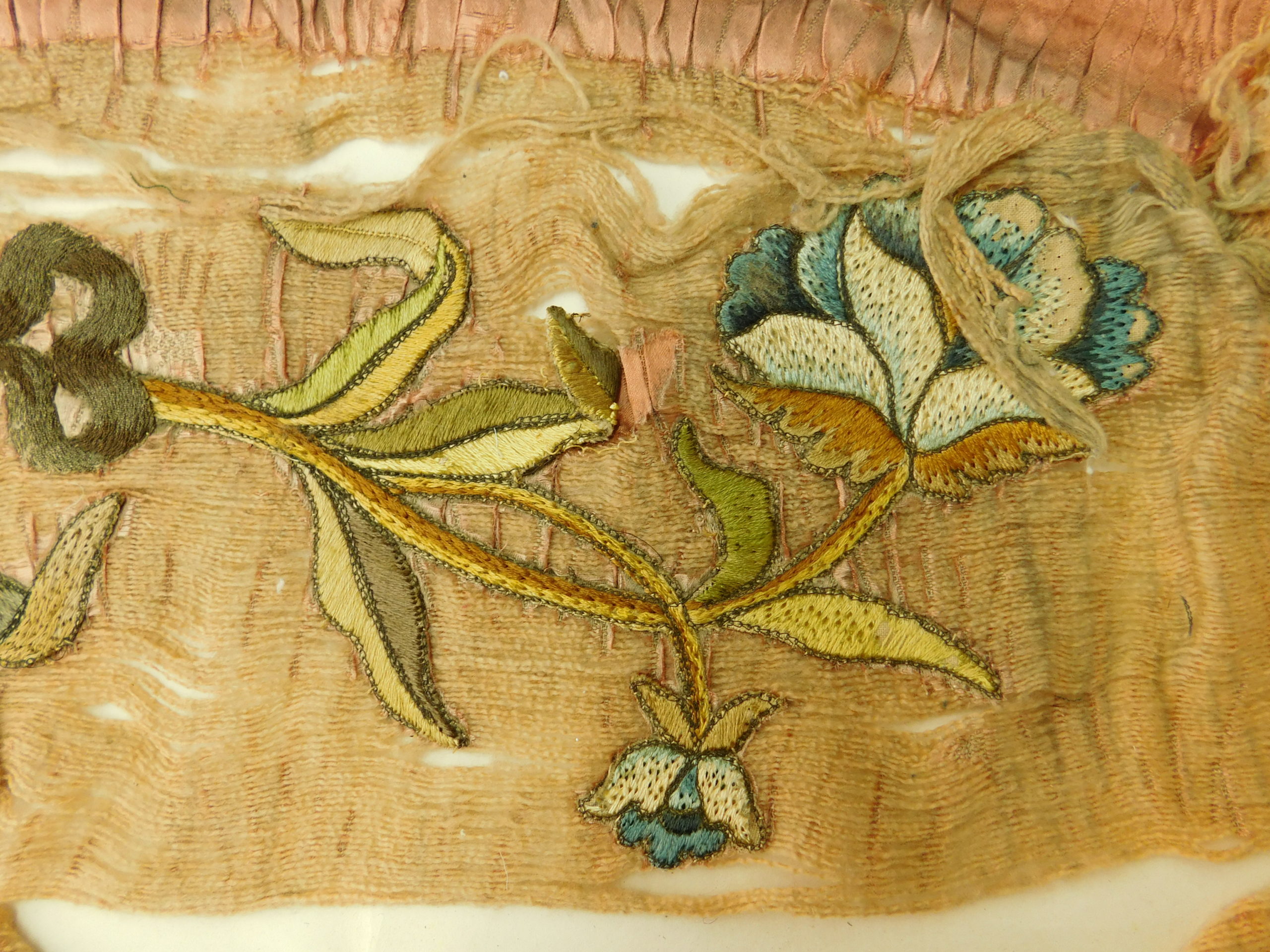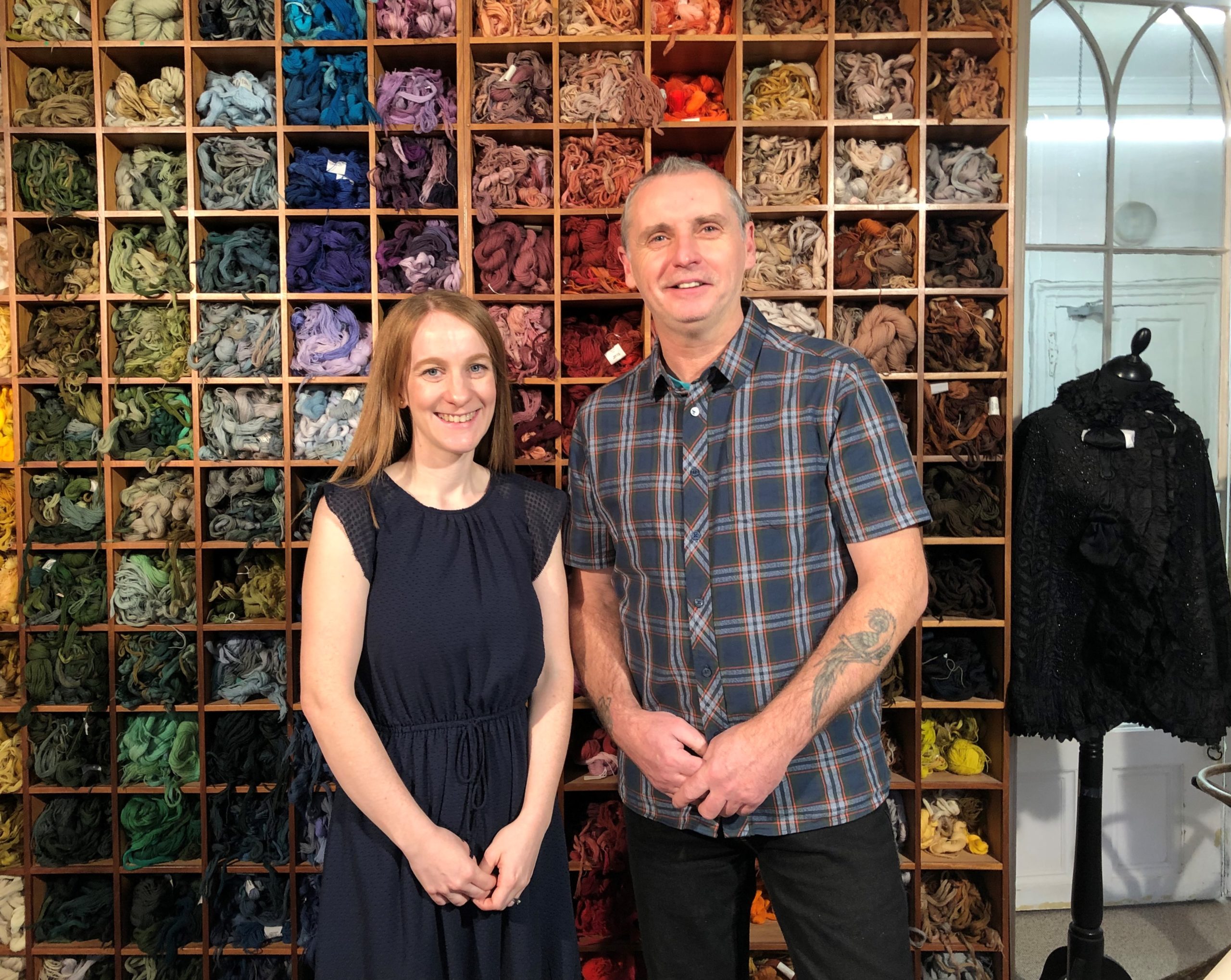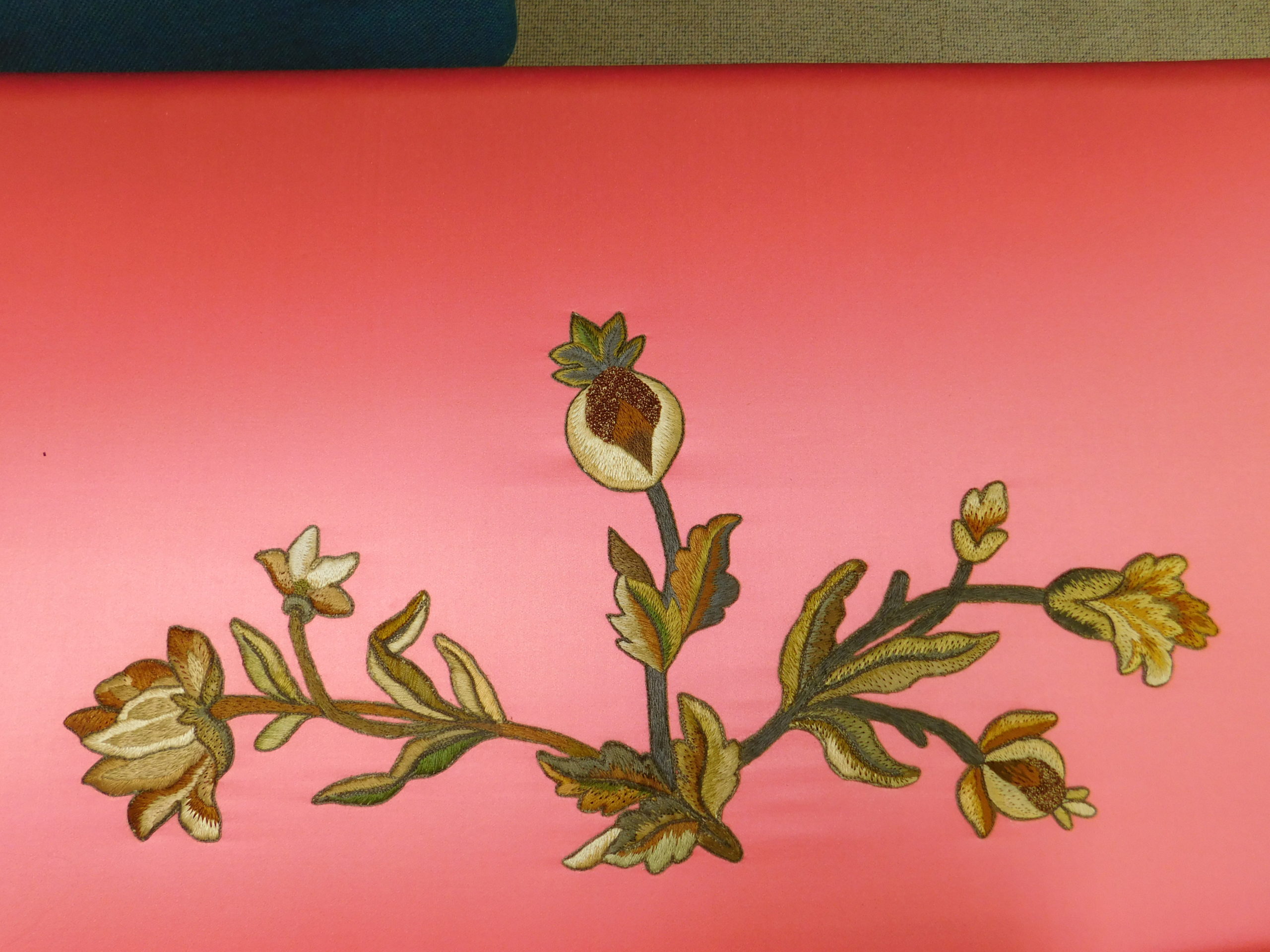Latest news
Keep up to date with all the latest news from the Royal School of Needlework
Rare Chair Restored
1st September, 2020
Just in case you missed it, you can view the terrific TV coverage featuring restoration work by our Embroidery Studio on Salvage Hunters: The Restorers that was broadcast last week on Quest TV.
Read below to find out more about all the processes that went into our part in this restoration.
The team at Salvage Hunters: The Restorers found the most stunning Au Bon Marché chair that had been well used and loved. The chair needed to be completely restored, including all the embroidery. We were initially sent images and a short video. These were perfect to be able to give some advice and a suggested process on how to not only restore the design, but also retain as much of the remaining embroidery as possible.
The embroidery was Long and Short Shading which had been applied onto the silk fabric and edged with a metal thread, which appeared to be like Chain Stitch or possibly Tambour Embroidery. The silk fabric was quilted with a regular pattern throughout, but had badly deteriorated. The warp remained, suggesting a stronger fibre with a matt finish, possibly cotton or linen. The weft had deteriorated more, suggesting a silk fibre. This meant that it was a mixed fabric and harder wearing than just silk.
Light is the biggest factor in the deterioration of fabric in furniture, such as curtains on a south facing window. Of course there is also the natural ‘wear and tear’ in using an item of furniture. A chair seat is always worn more than the back due to the extensive use they receive. Our team of Studio experts felt that the embroidery had originally come from another source and was not made for this chair. Indeed, it could have been a little older than the chair.
Each piece of the chair was worked separately and had been taken off by upholsterer Craig Hughes who is also one of the presenters on the TV show. Before we start a piece, such as this, measurements and tracings are taken so that the embroidery is placed exactly where it was on the original. We removed the embroidery from the base fabric by unpicking the stitches and gave it a light surface clean using a low suction conservation vacuum. This removes dirt, dust and debris along with any insect residue.
Part of the embroidery was completely missing, so we also needed to rework that in the style of the remaining embroidery. We found shadowing on the backing fabric that gave us some clues to the missing section of the design. We also used books and our paper archive to help assist with this process. We worked it separately and then transferred it on the new fabric, ensuring it appeared exactly the same as the other pieces. We then transferred the embroidery onto a new base fabric complete with the newly embroidered section.
As we transferred the embroidery onto the new fabric we replaced any missing stitches, matching as near as possible to the original and in a similar technique so that they blended well. People often wonder where we get our threads from and how we are able to match colours so accurately. We have an extensive collection of different coloured silks and wool threads, some of which are stored in our famous ‘Wall of Wool’ in our Studio at Hampton Court Palace.
RSN Embroidery Studio Project Manager, Gemma Murray, met with Craig and worked with our Studio Embroiderers and Future Tutor Students to bring all the project together. Gemma said: “It was really lovely to meet Craig and to see the original embroidery up close for the first time. Each piece we work on is so unique and we love a challenge. We were able to combine our traditional hand embroidery expertise and methods to restore the embroidery to its former glory. Replacing the missing motif felt a little like working on a jigsaw puzzle. Through careful consideration and looking closely at the remaining elements, we have been able to recreate and add the final missing piece and imagine just how exquisite the piece would have looked when it was first stitched over 160 years ago.”
If you have an item to be restored, please email our Embroidery Studio: [email protected]
More about Le Bon Marché
Le Bon Marché Rive Gauche was the first department store in the world. It opened in 1852 in Paris at the instigation of Aristide Boucicaut and his wife Marguerite. They were both in favour of “a new kind of store that would thrill all the senses”. Combining unconventionality and elegance, this unique space designed by the architect Louis-Charles Boileau and the engineer Gustave Eiffel, displayed a singular style influenced by the creative vitality of Paris’s Rive Gauche. Original creations and limited editions stood alongside a selection of the most beautiful objects from all over the world.
